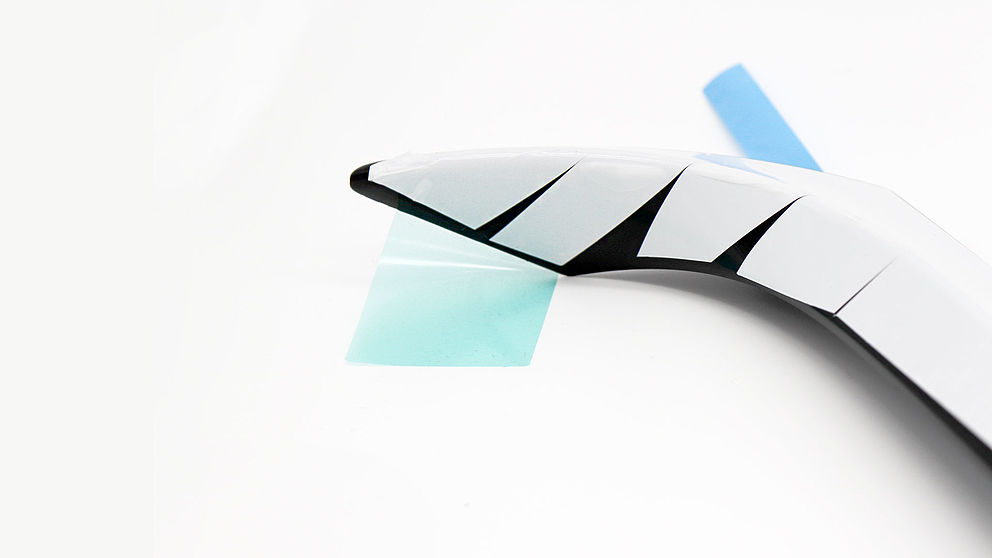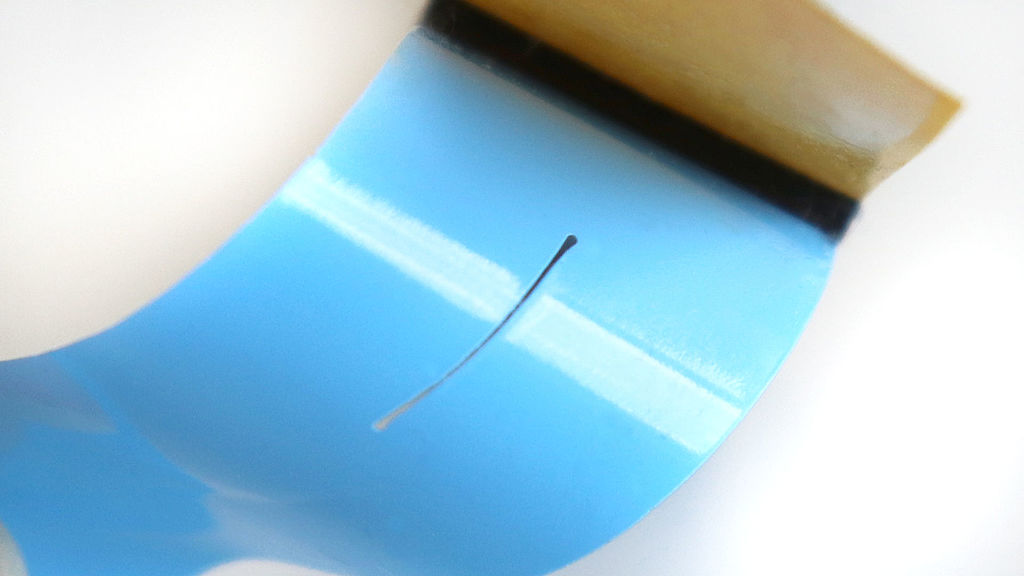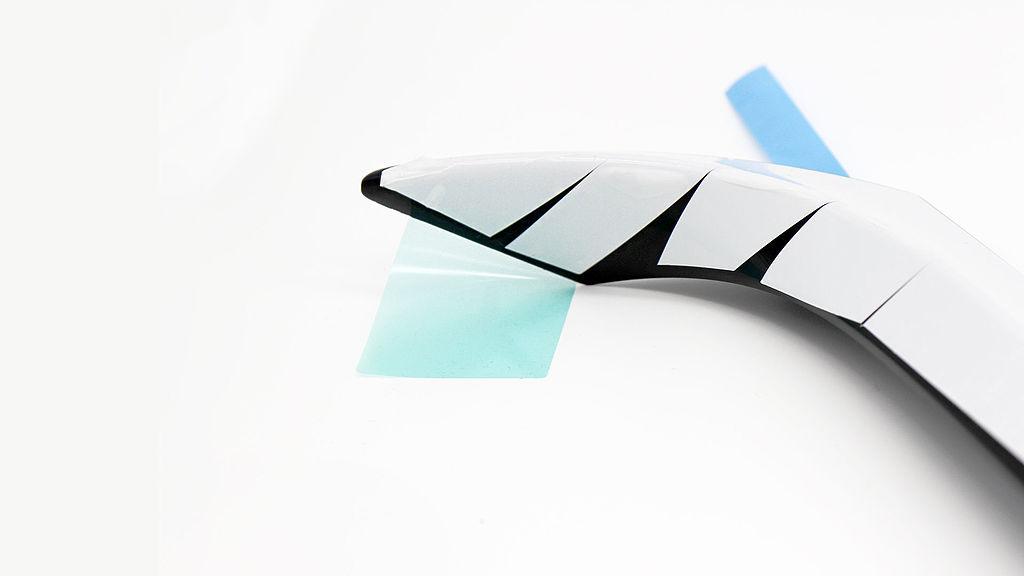To ensure that the aerofin seals tightly even with varying pressure and to prevent noise, a both-side adhesive spacer pad was constructed. It is placed on the upper edge of the fin and is equipped with an extra tear-resistant liner. So the part can be mounted first and the liner is removed afterwards.
Alternatively, the product can also be equipped with an adhesive foam on one side – in this case a liner would not be necessary.
In addition, the aerofin has been equipped with a protective film to ensure that the outer shell is not damaged during assembly and transport.






